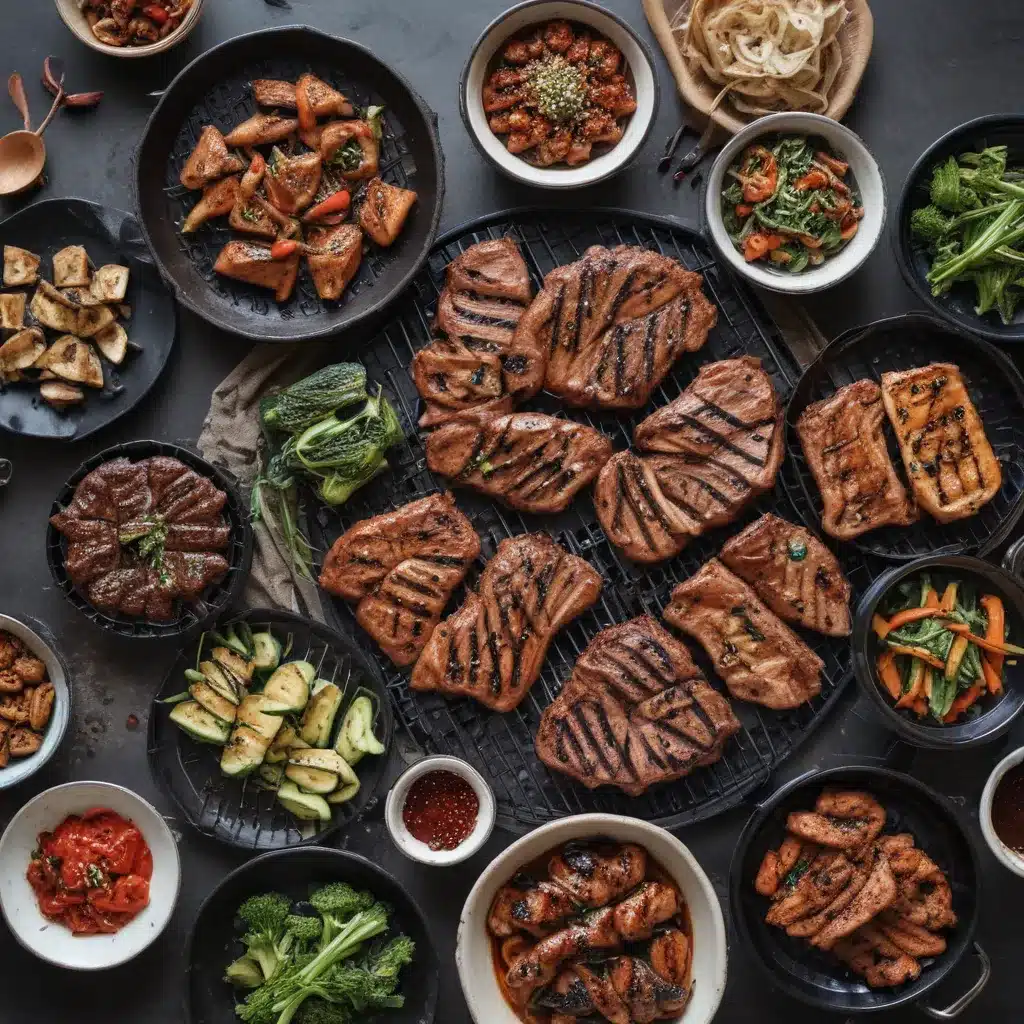
Mastering the Art of Korean BBQ
You know it’s a special occasion when my mom fires up the grill. Rain or snow, she’ll grill up pounds of meat for platters of glistening galbi gui. [1] As a first-generation Korean-American kid, I grew up surrounded by the intoxicating aromas of sizzling bulgogi and the lively chatter of family gatherings centered around the smoky, flame-kissed feast.
Korean BBQ, or gui, is more than just a meal – it’s a cultural experience that brings people together, ignites the senses, and sparks memories that linger long after the last morsel has been devoured. Whether you’re a seasoned gui enthusiast or a newbie looking to dive into the world of Korean grilling, let me share the tips and techniques that will have you mastering the art of Korean BBQ in no time.
The Meat Matters
The foundation of any great Korean BBQ experience lies in the quality of the meat. The most popular cuts for gui include bulgogi (marinated beef), galbi (short ribs), and samgyeopsal (pork belly). [2] When selecting your proteins, look for well-marbled, tender cuts that will soak up the flavors of the marinade and develop a delectable char on the grill.
Flank steak, skirt steak, and ribeye are all excellent choices for bulgogi, while galbi shines with the classic flanken-style short rib. For your samgyeopsal, opt for thick, fatty slices of pork belly that will render down into juicy, melt-in-your-mouth perfection. [3]
Remember, the key to tender, flavorful gui is all in the prep work. Take the time to thinly slice your meats against the grain, making them easier to cook and chew. If you’re short on time, you can even ask your local Korean market to do the slicing for you.
The Marinade Matters Too
No Korean BBQ experience is complete without the perfect marinade. The salty-sweet flavor profile of gui marinades is what sets them apart, transforming even the toughest cuts of meat into tender, umami-packed delights.
At the heart of the marinade are staples like soy sauce, brown sugar, and Korean pear, which not only season the meat but also help tenderize it. [1] Other key ingredients like garlic, ginger, and sesame oil infuse the protein with layers of complexity, while a touch of gochujang (Korean chili paste) adds a subtle heat that balances the richness.
When it comes to marinating, patience is a virtue. Allow your meats to soak up the flavors for at least 4 hours, or even overnight, for maximum impact. The longer the marinating time, the more the meat will become imbued with the essence of the marinade.
The Grill Matters
Now that you’ve got your high-quality meats and flavor-packed marinade, it’s time to turn up the heat and get grilling. While you can certainly use a stovetop grill pan or even broil your gui in the oven, the true Korean BBQ experience comes from cooking over hot charcoal.
The sizzle of the meat, the billowing smoke, and the lively interaction of cooking tableside – this is what makes Korean BBQ a truly immersive culinary adventure. [4] As the juices from the meat drip onto the hot coals, they create a flavorful steam that infuses the protein with an irresistible smokiness.
When setting up your charcoal grill, be sure to create two temperature zones – a high-heat area for searing and a lower-heat area for gentle cooking. This will allow you to achieve that perfect balance of caramelized exterior and juicy, tender interior on your gui.
The Wrap-Up
No Korean BBQ feast would be complete without the traditional ssam, or wrapped bites. [1] Grab a crisp leaf of red leaf lettuce or perilla, slather on a generous dollop of ssamjang (a spicy-savory soybean paste dip), and then pile on your grilled meat, rice, and an array of colorful banchan (Korean side dishes).
The interplay of the tender, charred meat, the cool, crunchy greens, and the bold, umami-rich ssamjang is what elevates Korean BBQ to a transcendent dining experience. It’s a symphony of flavors and textures that will have you reaching for more with each delectable bite.
So, whether you’re hosting a backyard BBQ or planning a cozy indoor feast, embrace the art of Korean gui and let the sizzle, smoke, and sheer joy of the experience transport you to the bustling streets of Seoul. Gather your loved ones, fire up the grill, and get ready to embark on a culinary adventure that will leave a lasting impression on your taste buds.
References
[1] Knowledge from https://kimchimom.com/galbi-gui-and-grilling-tips/
[2] Knowledge from https://kimchimari.com/samgyeopsal-gui-korean-pork-belly/
[3] Knowledge from https://www.reddit.com/r/IAmA/comments/xrzfka/i_am_a_korean_bbq_server_who_has_been_doing_this/
[4] Knowledge from https://www.munchery.com/blog/exploring-korean-bbq-techniques-recipes/
